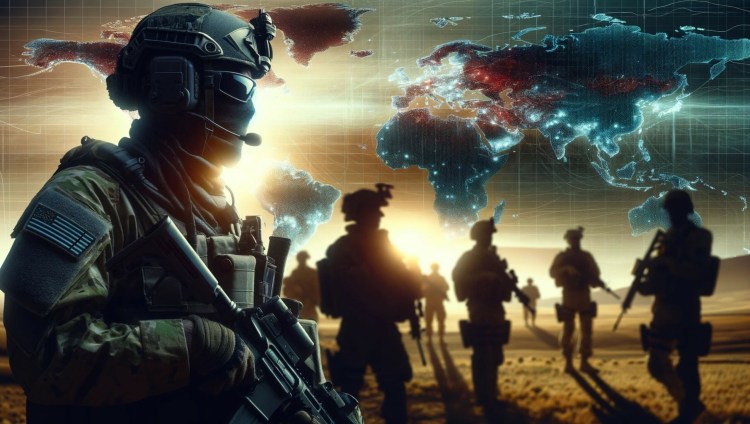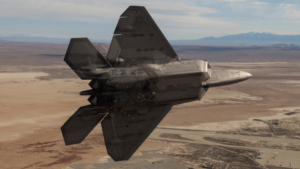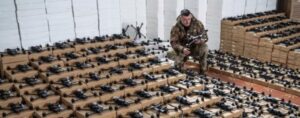Editor’s Note: SOFREP is pleased to be able to bring the following piece to you, penned by former Green Beret and SOFREP reader Curtis L. Fox
—
Modern Mercenaries
Wagner operates as an unofficial arm of the Russian Ministry of Defense, giving the Kremlin plausible deniability as it destabilizes and exploits developing nations and frontier economies.
Wagner reminds Western leaders daily as to why the UN enforces sharp prohibitions against the use of mercenaries. However, the use of mercenaries to wage wars and maintain geopolitical stability was historically common up until the late 19th Century. The Romans hired and integrated Gothic mercenaries into the legions to such an extent that it became more common for orders to be issued in a Germanic dialect than Latin.
History’s leaders realized that the surest way to lose a war was to depend on unmotivated, incompetent, and unreliable soldiers. Cosmopolitan environs do not produce young men that are accustomed to hardship, and rather than draft unfit citizen soldiers from the ranks of the aristocracy and merchant classes, leaders of wealthy nations often preferred to hire dangerous men from beyond the fringes of polite society. These mercenaries were simply more capable at contending with the extremes of human barbarity.
In 1991, Sierra Leone began a bloody civil war that would last through the end of the 20th Century. The war was largely fought over control of Sierra Leone’s alluvial diamond mines between the Republic of Sierra Leone Military Forces (RSLMF) and the Revolutionary United Front (RUF).
In the face of daily crimes against humanity, the National Provisional Ruling Council of Sierra Leone decided to hire Executive Outcomes, a mercenary firm, to stop the bloodshed. This story tells the moral case for mercenaries.
The Plot
RUF was founded and led by a revolutionary named Foday Sankoh, an ally of Liberian dictator Charles Taylor. Sankoh gathered a small force of former soldiers around himself and began raiding communities in proximity to diamond mines. These raids allowed him to fund his campaign through “blood diamonds”. The RUF became notorious for brutality, raiding villages in order to kidnap children. Young boys were indoctrinated as child soldiers and young girls were sold into prostitution. Indoctrination processes for boys often included forcing the child to execute his parents. With support from Liberian Special Forces, the RUF’s terror campaign spread throughout the rural areas of South East Sierra Leone, and sought to overthrow the government based in Freetown.
Due to the inept response of President Joseph Momoh, RUF successfully occupied large tracks of land that were rich in alluvial diamonds. In April 1992, the incompetence of the Momoh government coupled with the egregious war crimes committed by the RUF precipitated a military coup in Sierra Leone. In a bid to reestablish civil order and prevent military defections to the RUF, a military junta calling itself the National Provisional Ruling Council (NPRC) seized control of the government in Sierra Leone and organized a series of counter attacks against the RUF.
By March 1993, the Sierra Leone Army, with aid from the Nigerian Economic Community of West African States Monitoring Group (ECOMOG) peacekeepers, had pushed the RUF all the way back to the border of Liberia in the South. This counter offensive was aided by the Liberian Civil War, which temporarily throttled Charles Taylor’s support to the RUF.
Unfortunately, the Sierra Leone Army offensive had secured the Koidu and Kono diamond districts from RUF control. For Sierra Leone’s disgruntled and exhausted soldiers, the riches of the diamond mines were too tempting, and soon the force was dealing with rampant corruption and defections. The Sierra Leone Army units plundered the mines, refused to fight, and often sold their weapons to the RUF. President Charles Taylor’s support to the RUF was soon restored and the ensuing offensive had almost reached Freetown by the spring of 1995.
Executive Outcomes
In March 1995, the NPRC recognized that the situation was deteriorating. In desperation the military junta hired a South African private security company called Executive Outcomes to wage war against the RUF. Executive Outcomes usually specialized in VIP protection and security services for oil rigs and infrastructure. However, its corporate board assembled a force of 500 advisors and 3,000 highly trained veterans of conflicts in Rhodesia (Zimbabwe), South West Africa (Namibia), and Angola to fight the RUF.
Executive Outcomes Forces were composed largely of white South African officers, and black soldiers from South Africa, Angola and Namibia. These highly trained soldiers were drawn from elite South African light infantry units like the 32 Battalion or the South West African Police’s Koevoet teams. They were viewed by the UN and international observers to be a collection of former spies, assassins, and crack bush guerrillas, drawn from apartheid’s most notorious counterinsurgency forces. The UN was also very wary of Executive Outcome’s corporate ties to oil and mining companies, although the extent to which these ties played a role in the Sierra Leone intervention is unclear.
Terence Taylor, a former director of the Washington based International Institute of Strategic Studies, opined that, “Despite their dark beginnings in the ashes of apartheid, there is a general move towards respectability.” Executive Outcomes was extremely effective in combating the RUF, tracking their movements through reconnaissance and intelligence operations, attacking RUF camps with a Mi-24 Hind Helicopter, and harassing RUF guerillas with Ranger-style infantry tactics. Despite UN misgivings, there is no evidence that Executive Outcomes extorted diamond concessions or operated beyond their mandate. Executive Outcomes’ operations in Sierra Leone were also very cheap, costing approximately $1.8 million per month for a highly organized, operationally effective, and ultimately successful campaign.
Executive Outcomes utilized prior counterinsurgency lessons from the Rhodesian Bush War, South African Border War, and Angolan Civil War, to devastate the RUF in Sierra Leone. Executive Outcomes won immediate momentum changing victories, and within the first 10 days of fighting, RUF had been pushed a full 60 miles south. RUF was pushed back into Liberia within a mere 6 months of Executive Outcome’s arrival. On 30 November 1996, RUF’s Foday Sankoh was left with little recourse but to sign the UN-brokered Abidjan Peace Accord. And during the momentary peace, Sierra Leone held parliamentary elections and presidential elections which ended the rule of the NPRC junta and ushered in the administration of President Ahmad Tejan Kabbah.
Despite these monumental successes, the UN Security Council remained outraged that the NPRC had hired mercenaries. Under extreme pressure from the UN, President Ahmad Tejan Kabbah terminated the contract with Executive Outcomes before the terms of the peace agreement had been fully implemented. Sankoh seized the opportunity and hostilities began again.
Political Stability Squandered
In 1997, disgruntled officers from the Sierra Leone Army attempted a coup against President Ahmad Tejan Kabbah and allied themselves to the RUF. Coup leader Major Johnny Paul Koroma announced a new ruling council called the Armed Forces Revolutionary Council (AFRC) and his officers armed approximately 600 inmates from the Freetown prison to participate. Several thousand rag-tag RUF fighters rapidly joined his small force. Freetown was under siege, and Sierra Leone again fell victim to a tidal wave of looting, rape, and murder.
Given that Nigeria was about to recall their ECOMOG peacekeepers, the international community attempted to broker the Lome Peace Accord. Lome proposed a unity government between President Kabbah, the AFRC, and the RUF. Foday Sankoh was given the Vice Presidency and control of the diamond mines in return for a cessation of hostilities and disarmament. The terms were guaranteed by both the ECOMOG and the UN.
The Lome Peace Accord was widely criticized because it put Foday Sankoh in power, demonstrating the efficacy of rising to power through ruthless bloodshed, child soldiers, and crimes against humanity.
UN Mission to Sierra Leone
Disarmament was repeatedly frustrated by RUF captains, most of whom refused to fully participate, as well as soldiers who were under no obligation to follow orders. In October 1999, the UN dispatched the UN Mission to Sierra Leone (UNAMSIL) to enforce the disarmament terms of Lome. UNAMSIL was originally under the command of Indian General Vijay Jetley, and brought serious military forces and resources to Sierra Leone.
The bulk of the force was made up of Nigerian soldiers and officers. Jetley soon issued a report against his Nigerian officers in which they were accused of sabotaging the peace by mining and laundering diamonds. The Nigerians fiercely protested and demanded General Jetley’s resignation. He was soon replaced by Kenya’s Lieutenant General Daniel Opande.
UNAMSIL’s combat forces soon swelled to 17,500 soldiers, making it the largest UN peacekeeping force in the world. It dispatched detachments to guard diamond mines and disarm RUF garrisons. Unfortunately, UNAMSIL forces were repeatedly rebuffed and humiliated by the RUF, who often surrounded and attacked them. In one hair-raising case, the RUF secured the surrender of 500 UNAMSIL peacekeepers, seized their weapons, and kept them as hostages. UNAMSIL eventually had to draw support from a coalition of British, Indian, Nepalese, Ghanian, and Nigerian troops in Operation Khukri to rescue these UNAMSIL troops.
In May 2000, as the UN mission began to fall apart, the United Kingdom declared its intention to intervene in its former colony and support the democratic government of President Ahmad Tejan Kabbah. In Operation Palliser, a British force of 1,200 paratroopers backed with British air and sea power shifted the balance of power of the conflict and stabilized the collapsing UNAMSIL forces. Operation Palliser finally broke the RUF and President Kabbah declared the Civil War over in 2002.
Why Did the UN Expel Executive Outcomes?
The UN had long prohibited the hiring of mercenaries by member states. The UN also viewed the employees of Executive Outcomes with great suspicion. The many ethnically motivated conflicts in South Africa, Zimbabwe, Namibia, and Angola did not generate international goodwill for the region’s former soldiers.
The force Executive Outcomes hired consisted of former spies, assassins, bush guerillas, scouts, and trackers. The vast majority of recruits came from units like the famous (and notorious) South African 32 Battalion, as well as South West African Koevoet counterinsurgency squads, remnants of Rhodesian special forces (SAS, Selous Scouts, light infantry, etc), and other disreputable groups. These unsavory hirings created a general view amongst international leaders that Executive Outcome’s Force consisted of questionable officers and outright war-criminals.
The UN also viewed Executive Outcome’s corporate leadership with great suspicion. Executive Outcomes started out by providing security details for the oil industry operating in Africa, and had offices collocated with both Heritage Oil and Gas and Branch Energy. When the NPRC announced that Executive Outcomes had been contracted to train the Sierra Leone Army, diplomats were infuriated to find out that Branch Energy would not only coordinate the operation, but that the commercial elements would be headed by Alan Paterson. Paterson was the former head of diamond conglomerate de Beers subsidiary in Sierra Leone.
The UN wished to protect Sierra Leone’s resources from exploitation, and to maintain an ethical-redline against the use of mercenaries. This makes sense in a policy symposium in New York. This makes sense to diplomats wearing business suits in air-conditioned auditoriums. This makes sense to human rights activists chatting in line at the university’s campus Starbucks.
The RUF’s rampage in Sierra Leone was funded by blood diamonds, narcotics, and prostitution. Its soldiers were mostly drawn from conquered villages where young boys were enslaved as child soldiers. When the RUF conquered villages the soldiers would often play a game based on the election motto, “The Future Is in Your Hands.” The soldiers would cut off the hands of the villagers and proclaim, “RUF is the future, so we will take your hands.” Pregnant mothers had their babies cut out. Nursing mothers had their breasts hacked off.
The UN was channeling the ethical priorities of advanced western democracies into a conflict that had devolved into medieval barbarism. UN leaders simply did not have to live with the day-to-day realities of this butchery.
This disconnection caused the UN to lose sight of the immediate priority: End the RUF’s Reign of Terror.
To make matters worse, none of the world’s major powers wanted to commit ground forces to a guerilla war in West Africa. The international community attempted to enforce a peace through the corrupt and incompetent ECOMOG and UNAMSIL missions, allowing daily crimes against humanity to drag on for a decade.
It was only as the UNAMSIL mission was collapsing that the United Kingdom committed a competent force of paratroopers with sufficient firepower to rout the RUF. After leading Operation Khukri – the rescue of 500 UNAMSIL peacekeepers – it finally became clear to London that the UN peacekeepers were hopelessly out of their depth. The bloodshed would only end if London took a direct hand. This points to a final problem in the UN’s international crisis management.
The Moral Case for Mercenaries
“When they get in trouble they send for the sons-of-bitches.”
– Admiral Ernest King
Conflicts like Sierra Leone or perhaps the Rwandan Genocide usually lack a Pearl Harbor type moment to motivate wealthy, sophisticated, and cosmopolitan bystander countries to, “hoist the black flag and start slitting throats.” While a civil war in Sierra Leone was transcending the limits of human malice, the world’s major powers would not involve themselves. The UN would only dispatch unmotivated and incompetent Peacekeepers. The world’s political classes maintained a rhetoric of non-violence and diplomacy, pretending that moral posturing was equivalent to “taking action”. Meanwhile, the people of Sierra Leone suffered atrocity after atrocity.
The Huns have no regard for UN resolutions or even-handed Peacekeepers. When men like Foday Sankoh attempt to achieve political power through crimes against humanity they have to be decisively confronted by hard and dangerous men—the kind of men that we prefer to keep on the fringes of society. This was the role Executive Outcomes played in Sierra Leone.
Russia’s Wagner does not play an altruistic or constructive role in places like Libya, Mali, Niger, or the Central African Republic. Acting as an unofficial arm of the Russian Ministry of Defense, Wagner enables military coups, exploits mineral resources, and provides illicit financial services to regional despots, juntas, and militias. Dividends from Wagner’s client state activities are sent back to Moscow.
This underscores exactly why the UN maintains prohibitions against mercenaries. However, there may come a day when the barbarians are at the gates. Rather than conscripting a citizen army of cynics, critics, ne’er-do-wells, aristocrats, pacifists, and philosophers to contend with the hordes of Gengis Khan, Western leaders may one day choose to hire mercenaries too.
In my recent book Hybrid Warfare: The Russian Approach to Strategic Competition and Conventional Military Conflict, I discuss the activities of Wagner mercenaries at length as they have been involved in operations in Ukraine, Syria, Africa, and even Latin America. If you found the above instructive or insightful then I’d encourage you to pick up a copy.
—
Disclaimer:
The views expressed in this article are those of the author and do not reflect the official policy or position of the Department of Defense or the U.S. Government.
—
Author Bio:
Curtis L. Fox is the author of the recently published book Hybrid Warfare: The Russian Approach to Strategic Competition and Conventional Military Conflict. Despite being accepted to the graduate engineering program at Virginia Tech, Curtis chose to enlist in the Army, where he learned to speak Russian and earned his Green Beret. After completing his time in service, Curtis studied at Georgetown University’s McDonough School of Business, earning a Master’s of Business Administration.
References:
Johanson, Lennart. “Paying the price: The Sierra Leone peace process.” http://www.c-r.org/downloads/Accord%2009_14Chronology_2000_ENG.pdf. Conciliation Resources. (September 2000).
CIA World Factbook. https://www.cia.gov/library/publications/the-world-factbook/geos/sl.html. Sierra Leone. (November 2017).
The Economist. “Foday Sankoh.” http://www.economist.com/node/1974062. Obituary Section. (August 2003).
BBC. “Britain’s Role in Sierra Leone.” http://news.bbc.co.uk/2/hi/uk_news/91060.stm. BBC New World Edition. (September 2000).
Ashworth, Michael. “Africa’s New Enforcers.” http://www.independent.co.uk/news/africas-new-enforcers-1363564.html. Independent News UK. (September 1996).
Soldiers of Misfortune. “War for Diamonds: Executive Outcomes in Sierra Leone.” http://www.soldiers-of-misfortune.com/history/eo-sierra-leone.htm. (2004).



